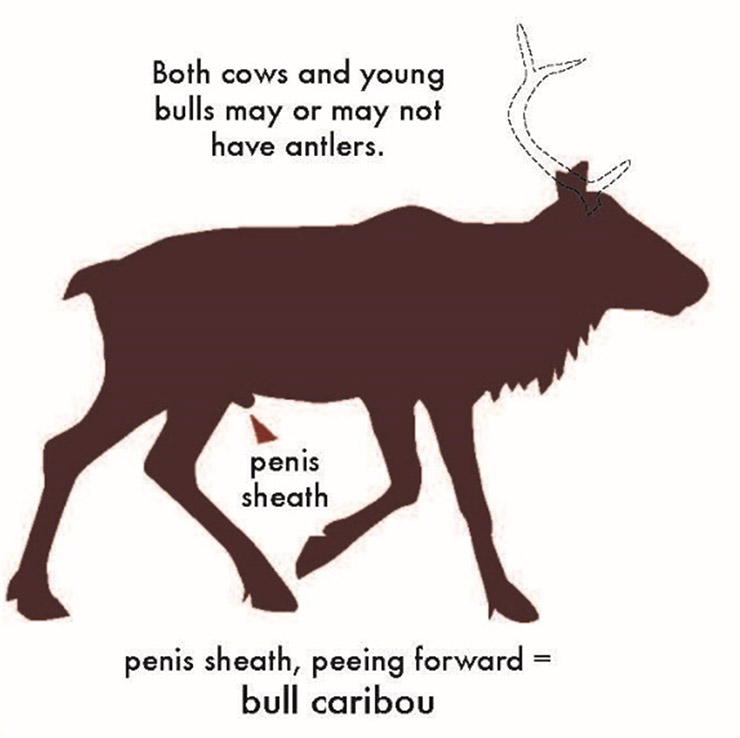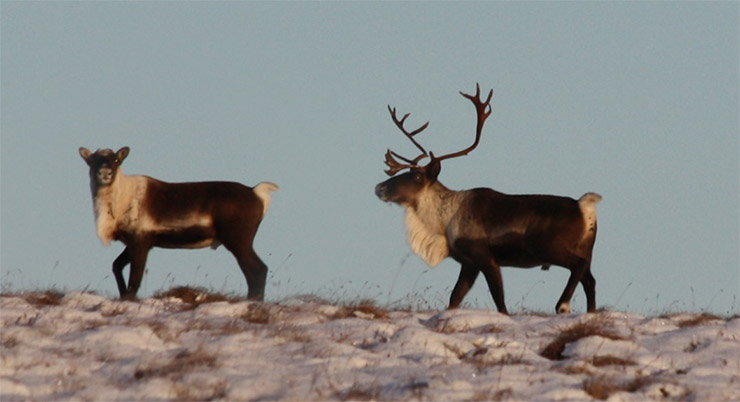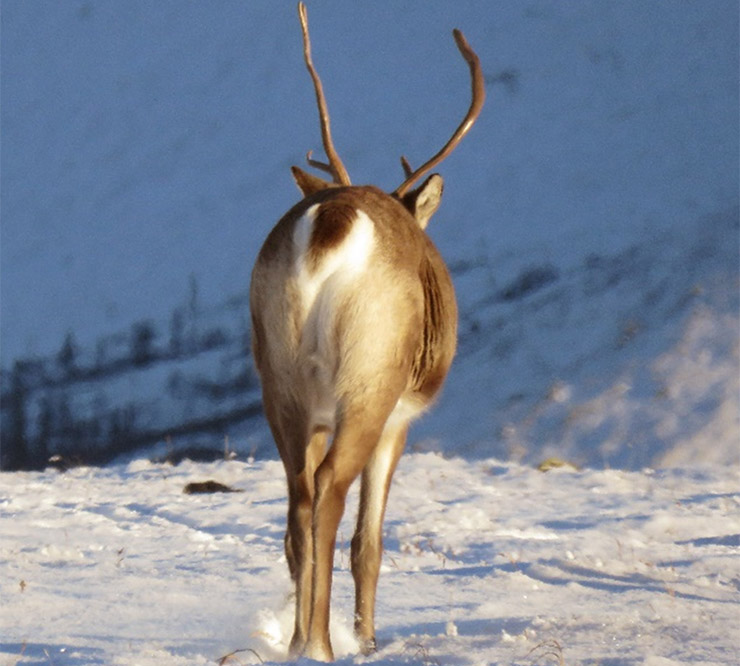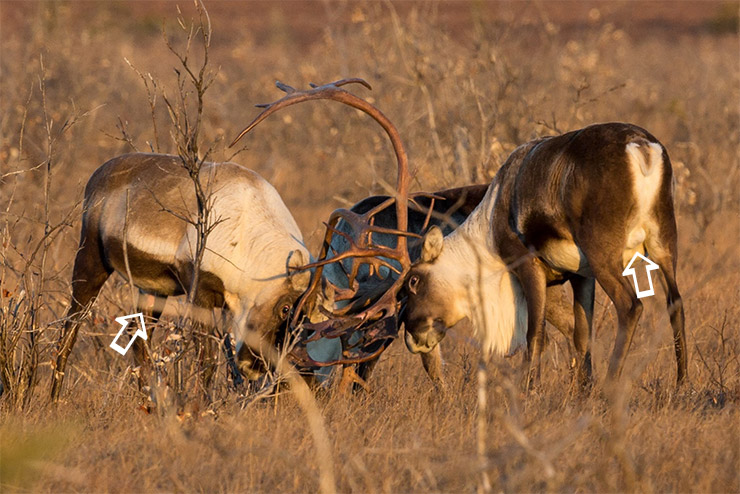Identifying Bull Caribou
Broadside
Antlers alone are not a reliable way to determine caribou sex over the course of the year. Large, mature bulls may be easy to identify by their antlers in late summer or fall, but younger animals, mature bulls after they have dropped antlers, and mature bulls just beginning to grow antlers cannot reliably be identified by the presence or size of antlers alone.
It can be difficult to distinguish between bulls and cows when viewing caribou from the side (broadside). Bull caribou urinate forward, while cow caribou urinate from the rear. The only other reliable clue is the presence of a penis sheath. Even so, on small bulls the penis sheath can be difficult to see. Similarly, the long winter coat on cows can resemble a penis sheath. It is best to use a combination of characteristics to determine caribou sex.



Rear
When viewing caribou from behind, check the shape of the white rump patch. Bulls usually have narrow, heart-shaped rump patches. Look for testicles on bulls, and the absence of a dark vulva. Keep in mind that during June and July bulls can shed their hair in patterns that resemble a vulva.



